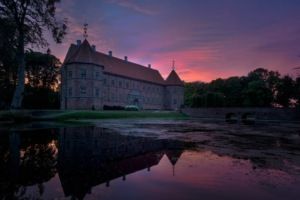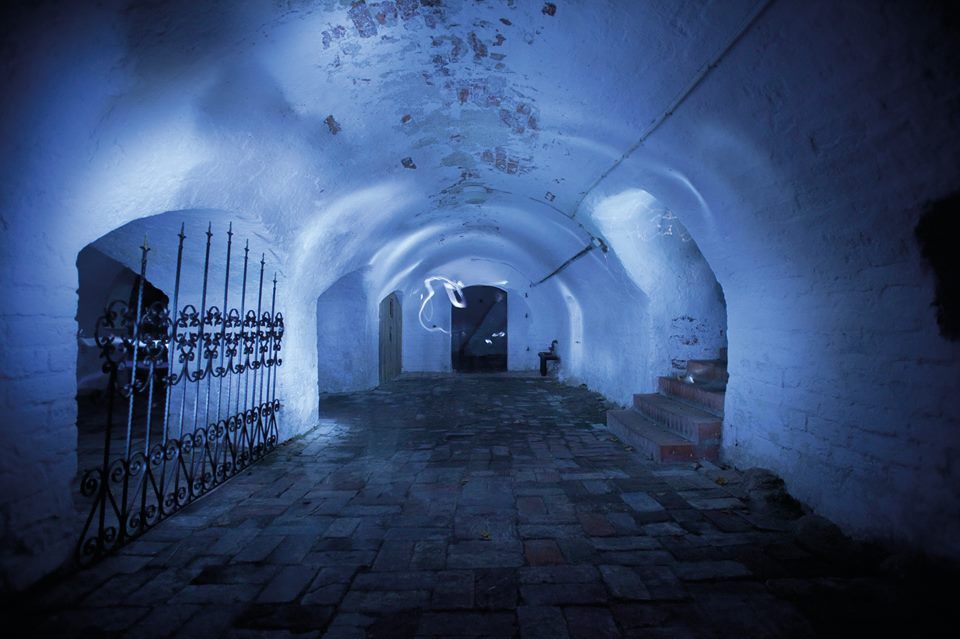Business & Education
Denmark’s most haunted house
This article is more than 9 years old.
Voergaard Manor in northern Jutland is haunted by Ingeborg Skeel – the country’s most famous ghost

Many people ask if they can spend the night in the manor, hoping for their own paranormal experience (photo: Voergaard Slot)
How do you rate the most haunted houses in the country? Ask the Danish Paranormal Society, of course. They place the sumptuous stately home Voergaard Manor at the top. This Renaissance palace was built between 1481 and 1590 and has been considered haunted since the early 1600s.
The ghost of Voergaard Manor is one Ingeborg Skeel, the lady of the house from 1578 until her death in 1604. This incredible piece of architecture is one of the country’s foremost Renaissance buildings, on a par with the royal palaces built during the era, and in fact the grand sandstone gateway was given to Skeel as a present by Frederik II, who had originally planned on using it at Frederiksborg Castle.
Voergaard Manor was given to Skeel’s mother Karen Krabbe by Frederik II in 1578, after it had come into royal hands during the Reformation some 40 years earlier. Though Krabbe was the official owner, her daughter’s cool management skills were clear even then, and when Krabbe died in 1588, Skeel became the sole owner. She was married from 1560 until 1585, when her husband, Otte Banner, died, but he seemed of little relevance to the matriarchal management of Voergaard, preferring to reside at nearby Asdal, which he ran as a vassal in keeping with the feudal society of the time.
Malevolent matriarch
Perhaps because of her enterprising approach to managing the manor, combined with the fact that she was a woman, Skeel made many enemies, and legends of her meanness became the stuff of local folklore. Among the rumours that sprung up around her was that she pushed the architect, a Dutchman named Philip Brandin, into the manor’s moat so she would not have to pay him. She also apparently cut off the fingers of peasant children who stole grain from her fields.
Despite this reputation as a mean old witch, Skeel actually was a generous donor, contributing money for workhouses, a school for the poor and a hospital to be built in the area around Voergaard.
After her death in 1604, Skeel is said to have haunted the house so extensively that at one point a priest was called to exorcise her in the nearby swamp. It didn’t seem to do much good, however, and she continues to wander restlessly around the house’s corridors, blowing out candles and getting particularly annoyed when the door to a corridor on the upper floor of the east wing is closed.
Packaging the paranormal
Nobody has any wish to exorcise Ms Skeel anymore, and in fact her presence is now part of the Voergaard Manor promotional package. As one of the employees at the manor, Ole Senkbæk, says: “I’m happy for her to be here. We get a lot of visitors hoping to see her.”
Though nobody lives in the manor anymore, which is maintained as a historical site open to the public, many people ask if they can spend the night here in the hope of having their own paranormal experience. Some of them are granted permission to do so.
Senkbæk himself claims to have had one experience with the ghost of Skeel. One night about a year ago, after he had neglected to turn off the lights in a corridor next to the banquet hall, he noticed a door shut that shouldn’t have been. He attributes this to Skeel, who was giving him a sign that he needed to turn the light off there.
Skeel was certainly a very attentive owner of the manor during her lifetime, and her ghost is considered by many as the building’s protector; in fact, some stories say that if she ever stops haunting the place, it will fall down.
Not so boaring
Though she is the house’s most famous ghost, she is not the only paranormal occurrence attached to Voergaard. The manor also contains the hide of a wild boar shot in 1700. Legend says the hide must never be removed from the place – or it will burn to the ground.
Those who aren’t blessed with a haunting from Skeel can content themselves with visiting the manor’s dungeons, which were in use as late as 1840. The dungeons have listening channels built into the walls through which you can, apparently, still hear prisoners groaning.
Then there’s the famous blood spot, which can be found on the floor of the northeast tower. It had been forgotten for many years, but after varnish was removed from the area during a renovation in 1997 it returned, and now stubbornly refuses to disappear. Polishing the spot removes it temporarily, but it always reappears after a couple of days.
So if you short of options for Halloween, you’re not now!











































